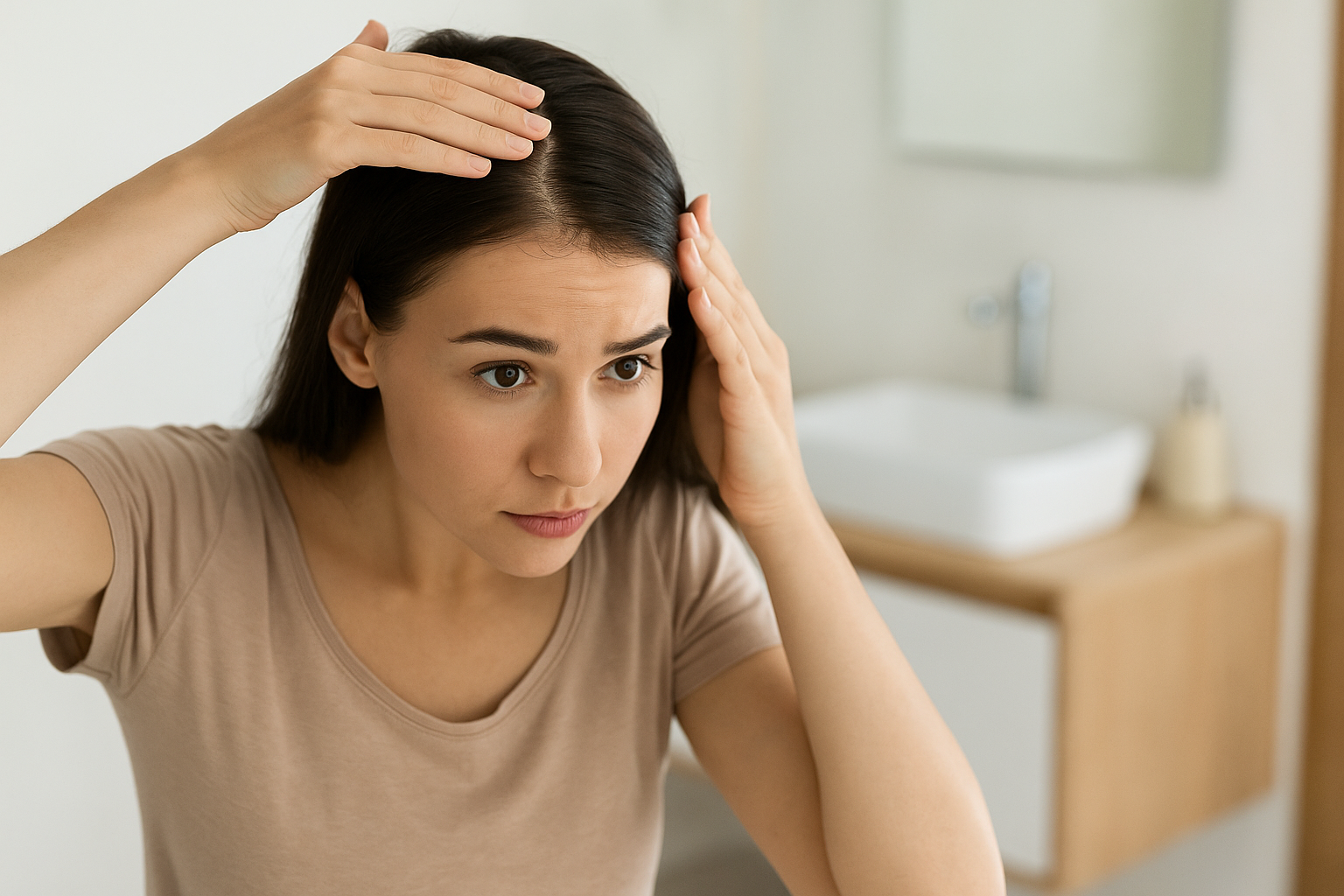Hair thinning rarely happens all at once. It’s more like a slow fade. Little changes you might brush off at first, until one day you realise your hair doesn’t look or feel the same. The earlier you spot these changes, the better your chances of slowing them down and giving your hair a real shot at restoration.
Hair health often reflects what is happening inside your body. If you notice early indicators, you can deal with the root reasons. So, In this blog we are mentioning What Are the Early Signs of Hair Thinning?
You Are Losing More Hair Than Usual
Everyone sheds hair. It’s part of the natural growth cycle. A few strands in your brush or shower drain? Perfectly normal. But when you start noticing clumps after washing, or the bathroom floor needs sweeping every other day, it’s worth paying attention.
Some people notice it all at once, like when you run your fingers through your hair and more strands than usual come away. For others, it creeps up slowly. If you’re not sure, keep a mental note for a couple of weeks. A noticeable jump in shedding, especially if it lasts more than a month, can be one of the first clear signs.
Also Read: Which Vitamin Is Good for Hair Fall Control and Stops Hair Loss?
Your Hair Part Looks Wider
This one often slips under the radar. You might catch it in a photo taken under bright light or when you pull your hair back and see more scalp than you remember. A widening part doesn’t happen overnight, but over months, that line can spread just enough to change the way your hair frames your face.
It’s more common in women with early hereditary thinning, but men can see it too, especially if the crown area is starting to lose density.
Your Ponytail Feels Different
Hair volume is something you feel more than you see. Maybe your hair tie wraps around three times instead of two, or that once-bouncy ponytail now feels limp. This isn’t your imagination. When hairs grow back thinner than before, your overall mass drops, even if you still have the same number of strands.
It’s a subtle change, but it’s one of the easiest ways to tell something is shifting.
Also Read: Which Vitamin Deficiency Causes Hair Fall the Most?
The Hairline Starts to Creep Back
A receding hairline doesn’t just happen to men. Women can get it too, usually at the temples. It’s not always dramatic; it might be a small uneven patch or a gentle rounding back of the hairline. The shift is gradual, so you may only notice if you compare photos from a few years ago.
Sometimes this is tied to hormonal changes. Other times, it’s hereditary. Either way, the earlier you notice, the sooner you can discuss preservation or restoration options.
Hair Isn’t Growing as Long as Before
This is one of the more surprising signs. You might find your hair seems to “stop” at a certain length before breaking or falling out. That’s often because the growth phase in the cycle is shortening. New hair comes in, but it’s weaker and doesn’t stick around as long.
The result? Hair that never quite gets back to its old fullness, even if you don’t see obvious bald spots.
Texture Feels Off
Sometimes the signal isn’t about losing hair; it’s about how the hair you still have feels. If your hair was once smooth and strong but now feels coarse, brittle, or overly soft, the structure of the strands may have changed.
Nutritional gaps, reduced scalp blood flow, or an increase in miniaturized hairs can make texture uneven. You might also notice more breakage at the mid-lengths or ends.
Also Read: How Often Should You Oil Your Hair for Hair Growth?
Why These Signs Matter
Hair follicles don’t just “wake up” after sitting dormant for years. Once a follicle has been inactive for too long, it’s much harder but sometimes impossible to restore. Spotting the issue early can make a real difference.
Hair follicles are far more likely to stay active and respond when they haven’t been inactive for too long. Even simple shifts, like improving your daily habits, adjusting your hair regime, or making better food choices, can help slow down the change. Taking action sooner also opens up more paths for support, whether that means medical procedures, dietary improvements, or focused scalp care.
Why Hair Thinning Starts
Hormonal Shifts: Pregnancy, menopause, thyroid imbalances – these all play with hormone levels that directly control hair growth cycles. When the balance tips, hair can thin rapidly.
Missing Nutrients: Hair relies on a steady supply of protein, iron, vitamin D, and B vitamins. If your diet is lacking or absorption is poor, strands can weaken from the root upward.
Stress: It’s not a myth, emotional or physical stress can trigger increased shedding. Sometimes the effect appears months after the stressful event, which makes it easy to miss the connection.
Genetics: If your parents or grandparents had thinning hair at a certain age, there’s a chance you may follow the same pattern.
Also Read: Neem Leaves for Dandruff and Hair Fall
Final Word
Early signs of hair thinning can be easy to miss. If you catch these signs early, you have a better shot at slowing the process and giving your hair the support it needs for restoration.
Your hair tells a story. Paying attention to the small changes now can make a big difference in how that story unfolds.



